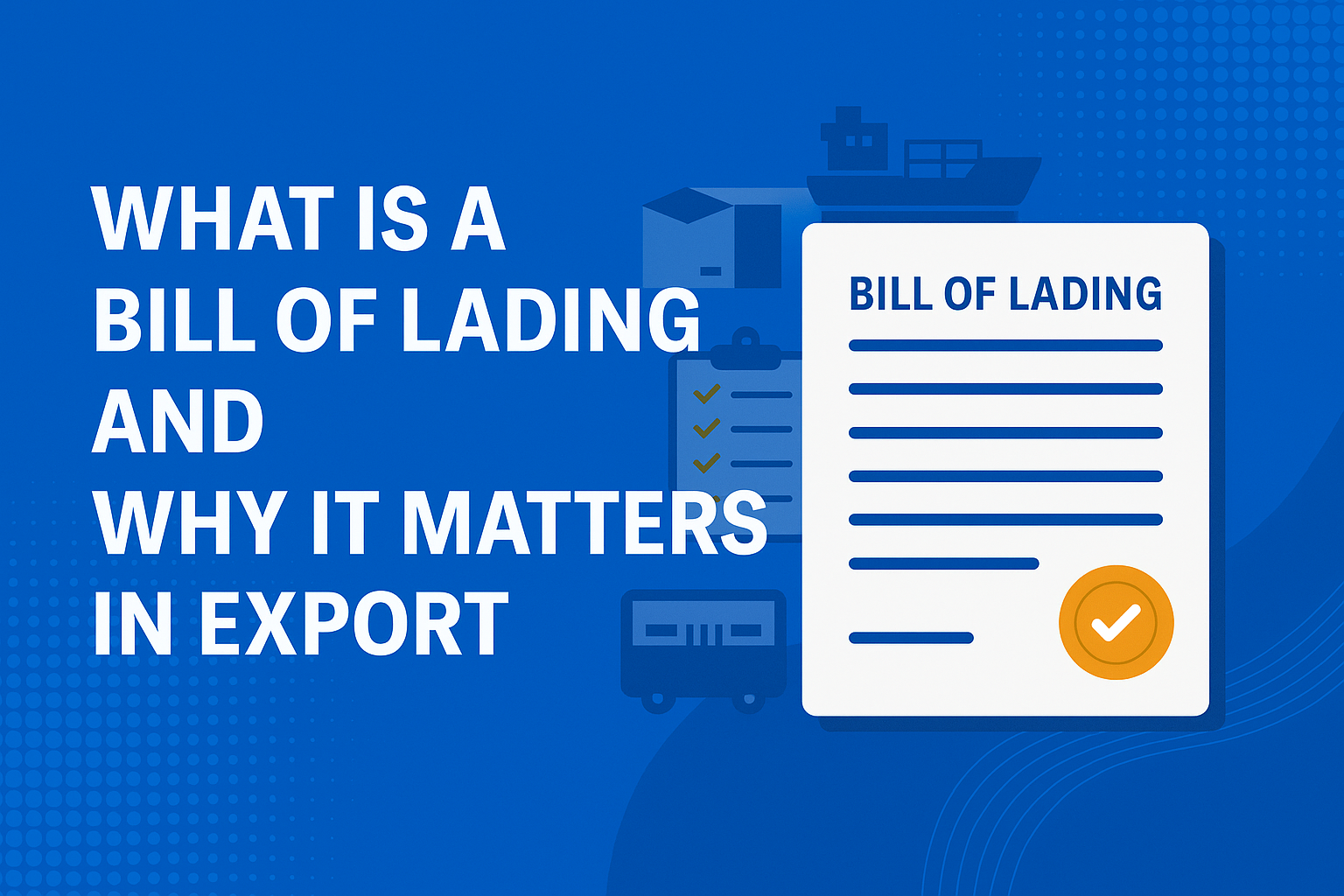A Must-Know Shipping Document for Every Indian Exporter
If you’re exporting goods from India, one document you’ll encounter in nearly every shipment is the Bill of Lading (B/L). Often referred to as the “passport of the cargo,” the Bill of Lading is not just a piece of paper—it’s a legal document, a receipt, and a title of ownership, all rolled into one.
In this detailed post, we’ll break down exactly what a Bill of Lading is, its types, components, how it’s used, and why it’s crucial for your export business.
📘 What is a Bill of Lading?
A Bill of Lading (B/L) is a document issued by the carrier (shipping line or freight forwarder) to the exporter (shipper), acknowledging receipt of the cargo for shipment. It serves three main purposes:
- Proof of Contract of Carriage
- Receipt of Goods
- Document of Title (ownership of goods)
Without this document, you can’t clear goods at the destination or claim payment in most international trade transactions.
🚢 Types of Bill of Lading
Depending on your shipping and payment terms, different types of B/L are used:
- Original Bill of Lading
- Issued in multiple signed copies
- Must be physically presented to claim goods
- Telex Release / Express Release B/L
- Digital release without requiring physical copy
- Faster, but used only when trust exists between buyer and seller
- Straight B/L
- Non-negotiable
- Deliverable only to the named consignee
- Order B/L
- Negotiable
- Can be endorsed to a third party
- House B/L vs. Master B/L
- House B/L is issued by a freight forwarder
- Master B/L is issued by the shipping line
- Both are needed when using an NVOCC or forwarder
📑 Key Contents of a Bill of Lading
- Exporter/Shipper details
- Consignee (buyer) information
- Notify party
- Port of loading and discharge
- Description of goods
- No. of packages, weight & dimensions
- Shipping marks
- Vessel name and voyage number
- Freight terms (Prepaid/Collect)
- Container or BL number
- Signature and date
🧾 Why is the Bill of Lading So Important?
Here’s why the B/L is one of the most critical export documents:
✅ 1. Legal Ownership of Goods
The holder of the original B/L can legally claim the goods at the destination. It’s used like a title deed.
✅ 2. Essential for Customs Clearance
Without a valid B/L, the buyer cannot clear goods at their country’s port.
✅ 3. Required for Payment Under LC
If you’re exporting under Letter of Credit (LC), banks demand the original B/L to release payment.
✅ 4. Proof of Shipment
B/L proves that the cargo was shipped, and is used to settle disputes regarding quantity, damage, or delivery.
✅ 5. Logistics Tracking
It allows exporters and buyers to track shipment status and confirm carrier responsibility.
🛑 Common Mistakes to Avoid
- Mismatch in details between Commercial Invoice and B/L
- Incorrect Incoterms like FOB/CIF marked on B/L
- Wrong consignee or notify party listed
- Issuing Telex Release B/L without buyer’s consent
📤 Who Issues the Bill of Lading?
- Shipping Line: For full container (FCL) or bulk shipments
- Freight Forwarder: For LCL or consolidated cargo
- Carrier’s Agent: At the port or through online portals
✅ Best Practices for Exporters
- Double-check all entries before the B/L is finalized
- Always keep one original copy securely
- Do not release Telex/Express B/L unless payment is received
- Use House + Master B/L for LCL shipments
🧠 Final Thoughts
The Bill of Lading is your shipment’s identity card and ownership proof. Mishandling it can result in delayed delivery, lost cargo rights, or non-payment. As an exporter from India, you must understand the terms, types, and how to safeguard your B/L in every transaction.
At StartExportIndia.com, we’re dedicated to helping new exporters like you handle every step of documentation with confidence and compliance.



